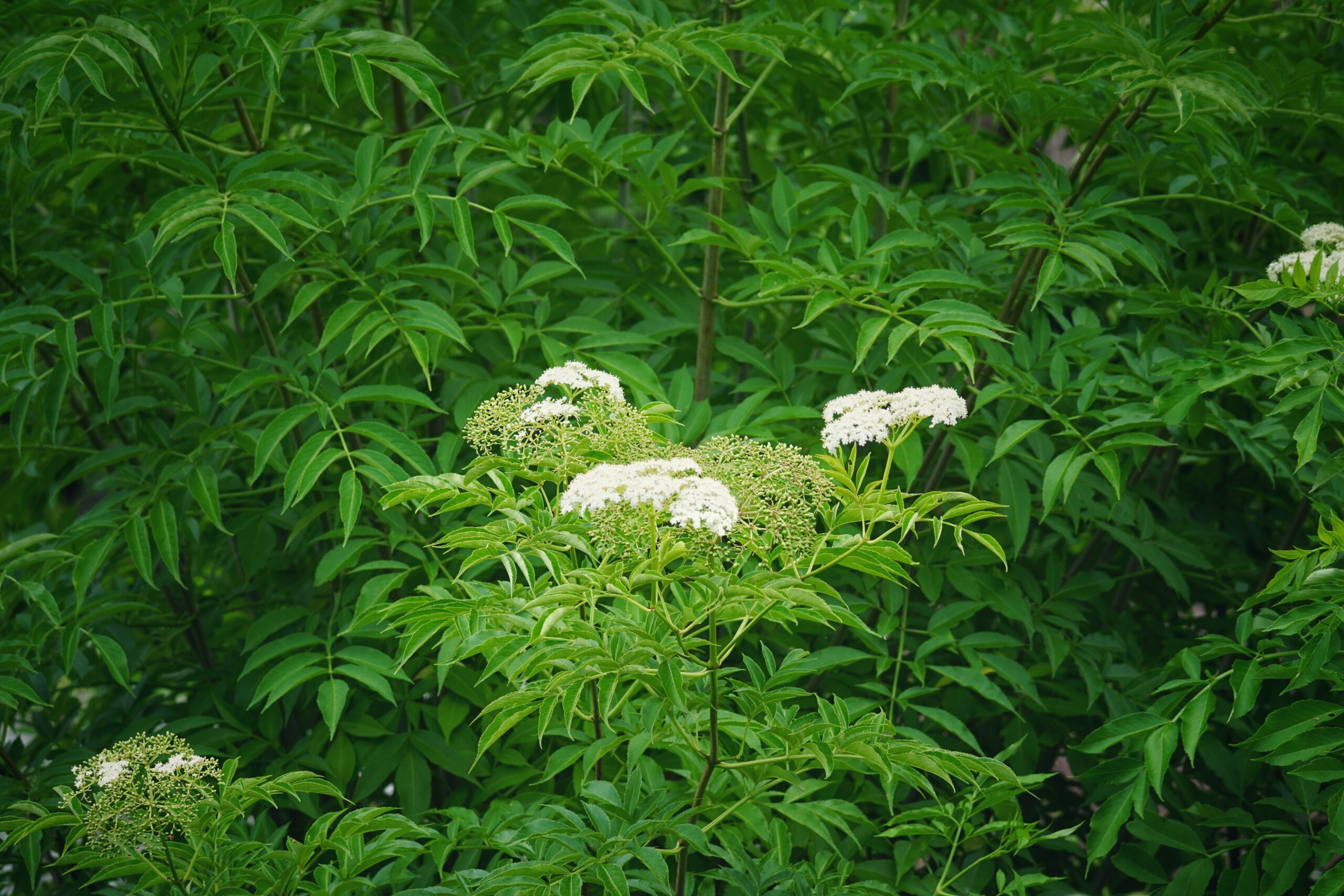Elderberry
Pictured above: Elderberry (Sambucus nigra subsp. canadensis) by Emily Bell. Click on terms for botanical definitions. View post as a PDF.
From spring through fall, dense stands of Elderberry (Sambucus nigra subsp. canadensis) with their large clusters of bright white flowers can be seen along Florida’s roadways and wetland edges. This prolific shrub to small tree is a haven for wildlife, providing cover and nesting areas for birds and small mammals as well as an abundance of food. Pollinators enjoy nectar from their profuse blooms, while birds and other animals feed on the berries.
The small (around ¼ inch) individual white to creamy colored flowers form large 4- to 10-inch flat-topped to rounded fragrant cymose clusters. Those dense flower clusters transition into many small round light green berries that ripen into a dark purple to almost black color. Young shoots start off herbaceous and become woody, light gray to brown stems with scattered lenticels. Oppositely arranged leaves are bright green and compound with five to 11 leaflets. Leaflets are also opposite with one terminal. They are oval to lance-shaped and have serrated margins. While evergreen throughout much of Florida, in colder areas Elderberry is deciduous.
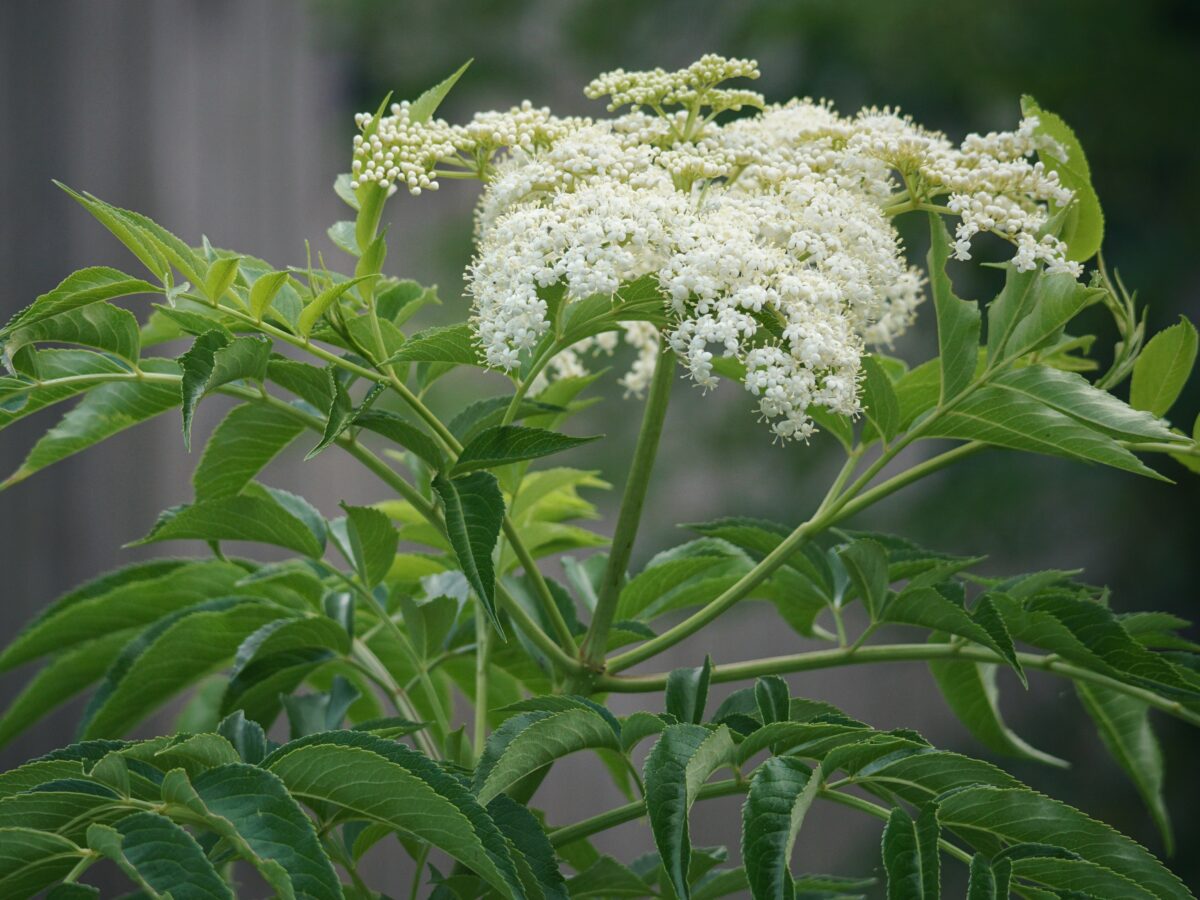
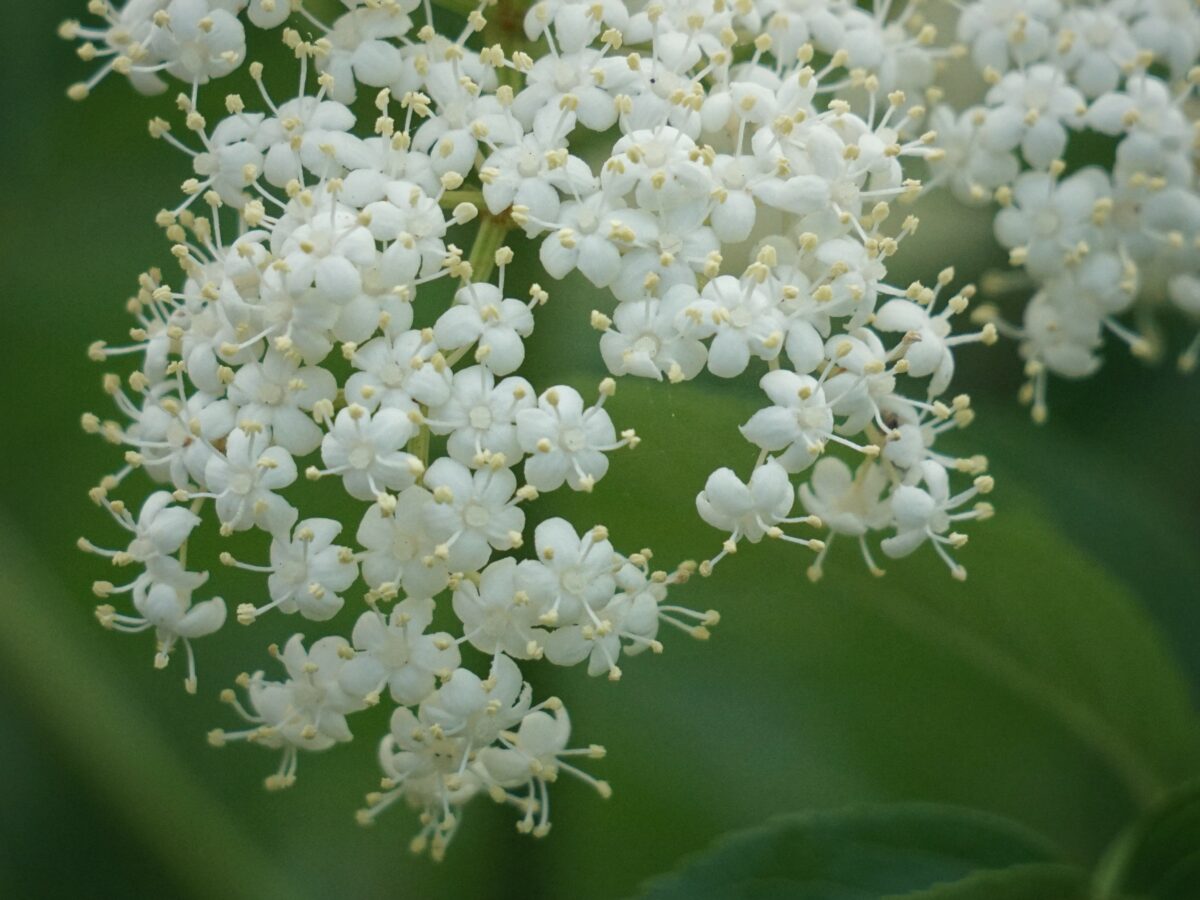
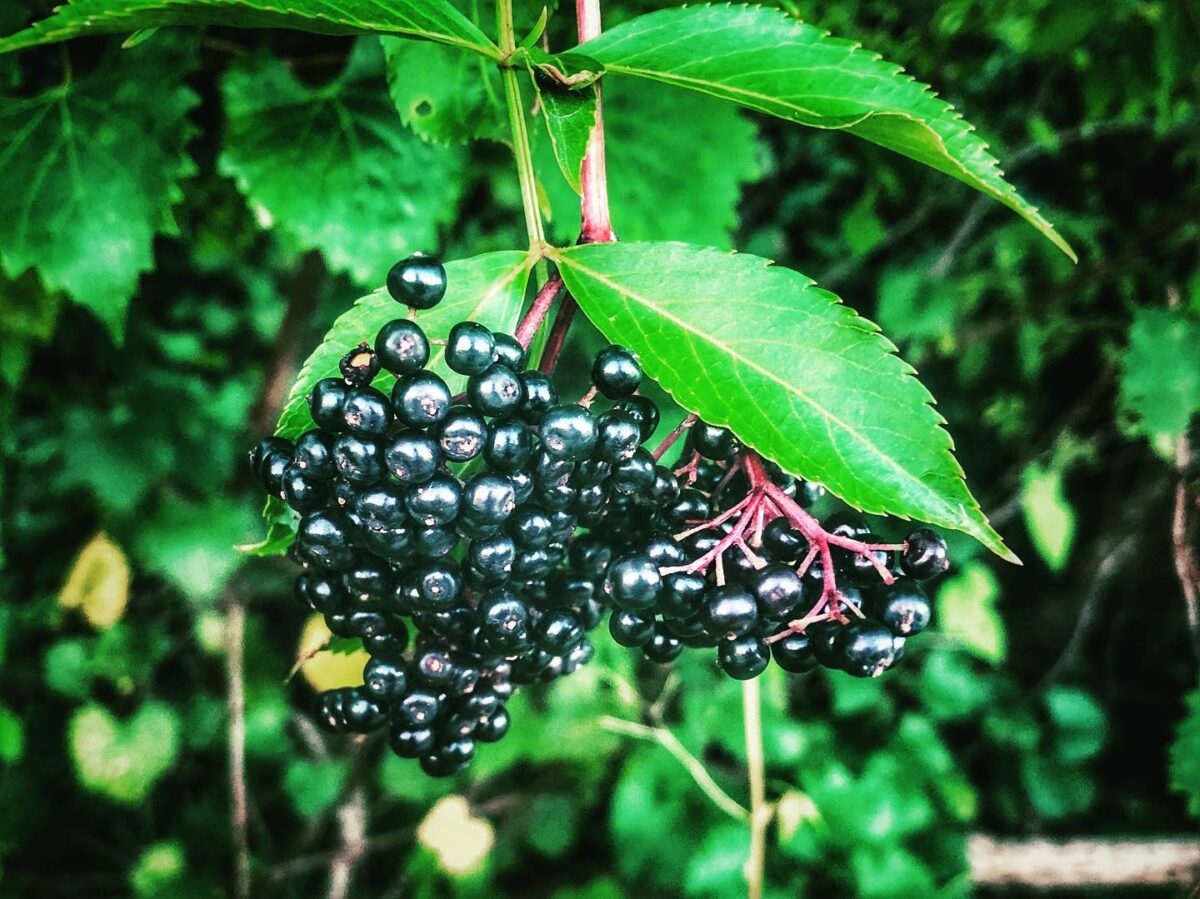
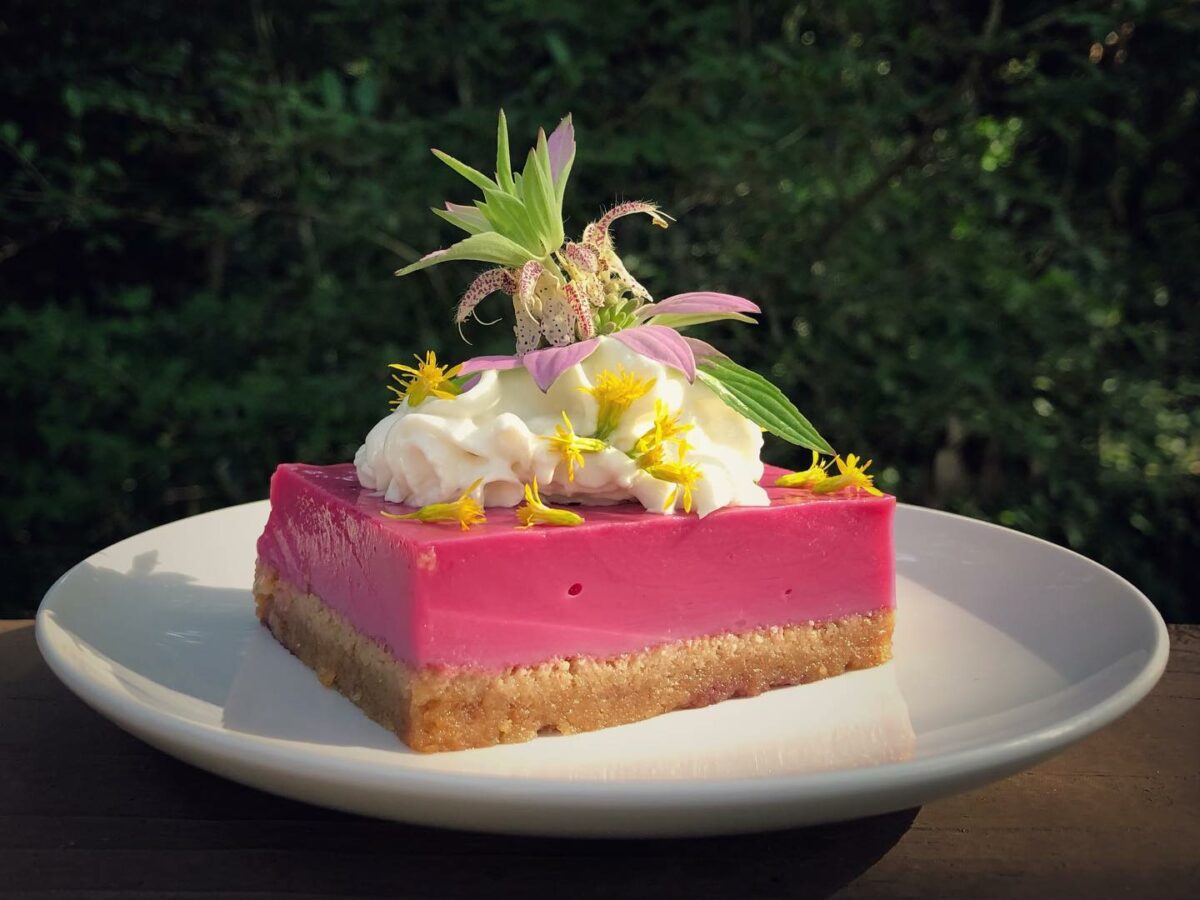
Elderberry has a rich ethnobotanical history. Recorded uses by indigenous people include making dyes from the fruits and twigs and creating musical instruments with the stems. It also has a deep connection with Southern culinary culture, with the flowers and ripe fruits being used in wine, desserts, jams and more. It is important to note however that most parts of the plant do have some toxicity as a result of cyanide-producing glycosides. The roots, leaves, stems and unripe berries should not be consumed. There is some debate over the danger of eating ripe uncooked berries, with some cases of poisoning having been reported, although others report anecdotally that they eat them regularly. Caution should be taken when introducing this plant into one’s diet. One should never consume any wild plant without being certain of its identification and researching its edibility thoroughly.
Family: Viburnaceae (Viburnum or Moschatel family)
Native range: Statewide
To see where natural populations of Elderberry have been vouchered, visit florida.plantatlas.usf.edu.
Hardiness: Zone 8B–10B
Lifespan: Perennial
Soil: Moist to wet sandy or organic soils
Exposure: Full sun to partial shade
Growth habit: Wide and thicket forming, can reach over 15 feet tall
Propagation: Seeds, cuttings, division of suckers
Garden tips: Elderberry makes a wonderful wetland edge or screen planting. Pruning may be utilized to promote denser and more shapely growth habits. Because Elderberry is clonal and will send out numerous suckers, it is best used in larger naturalistic settings or may require regular management to keep in a smaller more contained space.
Elderberry plants are available from nurseries that specialize in Florida native plants. Visit www.PlantRealFlorida.org to find a nursery in your area.

